Japanese Style Raw Egg Dipping Sauce Shabu Shabu Beef
This post may contain affiliate links. Please read my disclosure policy for details. As an Amazon Associate, I earn from qualifying purchases.

Shabu Shabu is a popular Japanese-style hot pot where the meat and assorted vegetables are cooked in a flavorful broth called kombu dashi. Everyone at the table takes part in the cooking and enjoys the ingredients with different dipping sauces. It's intimate yet casual, and a whole lot of fun!
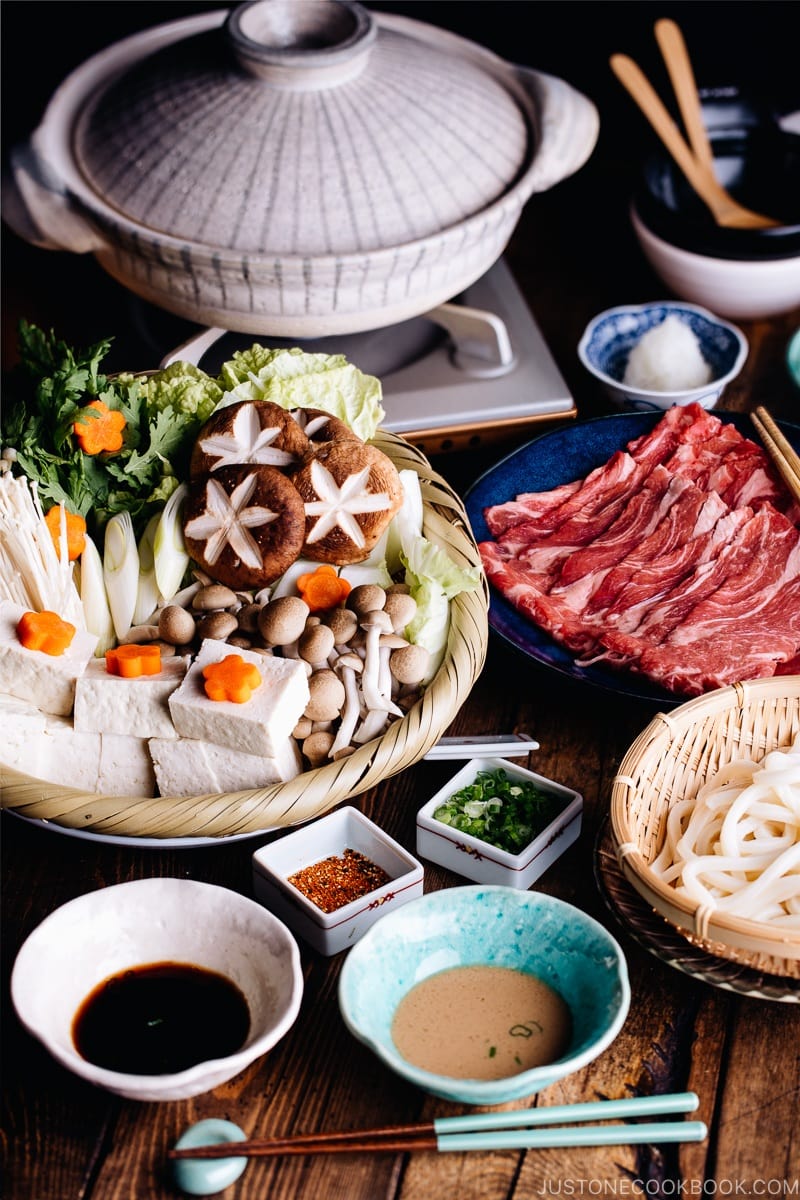
It's the holiday season and it's the time for friends and family to get together. What's the best Japanese meal for this occasion? It's Shabu Shabu(しゃぶしゃぶ)!
What is Shabu Shabu?
Shabu Shabu is one of Japan's most popular hot pot dishes along with Sukiyaki. The name "shabu shabu" is Japanese onomatopoeia. It came from the sound when you stir the vegetables and meat with your chopsticks and 'swish swish' in the hot pot. It's a fun meal since everyone sits around the hot pot at the table, cooks together, and eats while you chat, like fondue! A communal dining experience that inspires good appetites and brings people closer together.
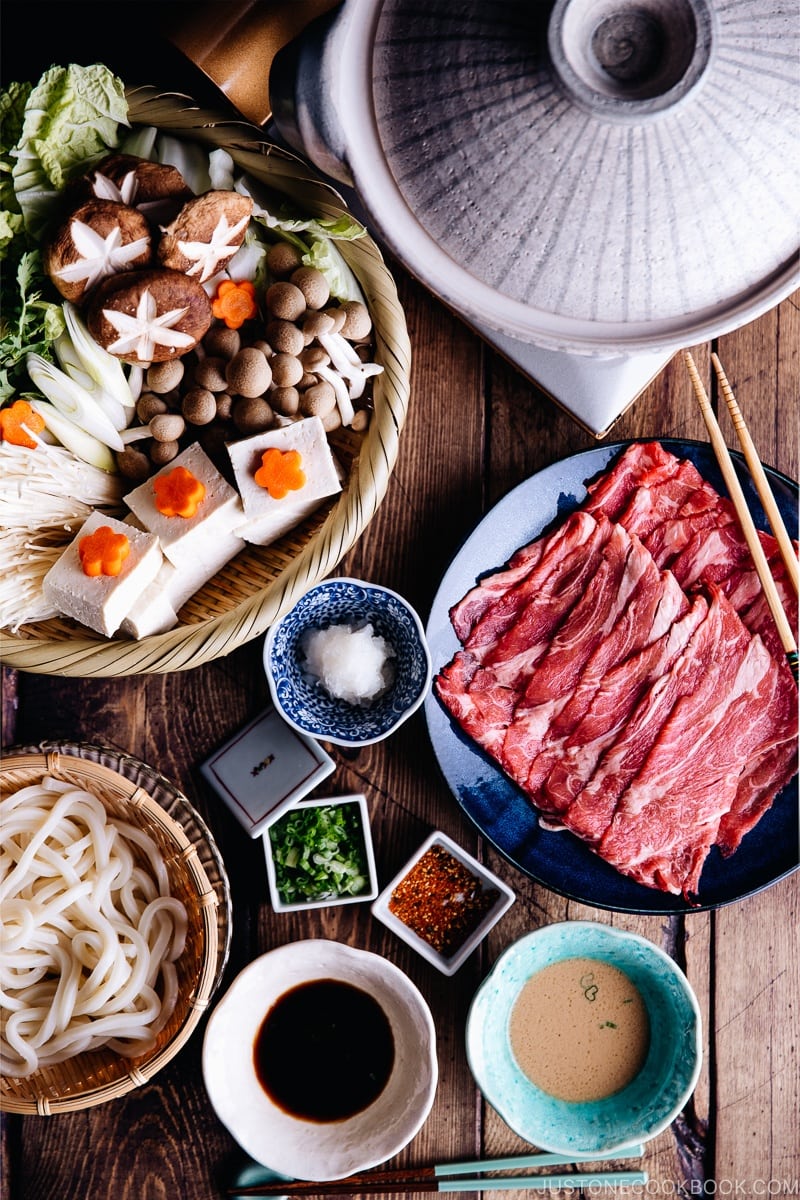
How to Prepare and Eat Shabu Shabu
The earthenware pot called donabe (土鍋) is set up on a portable gas stove in the center of the table. Inside is a simple yet umami-packed Japanese stock called Kombu Dashi. The uncooked ingredients are served on two large plates, one for thinly sliced well-marbled beef (or it can be pork), and the other one for vegetables and tofu.
Besides the platters of ingredients, each person is provided with dipping sauces. Typically, there are two types: sesame sauce and ponzu sauce.
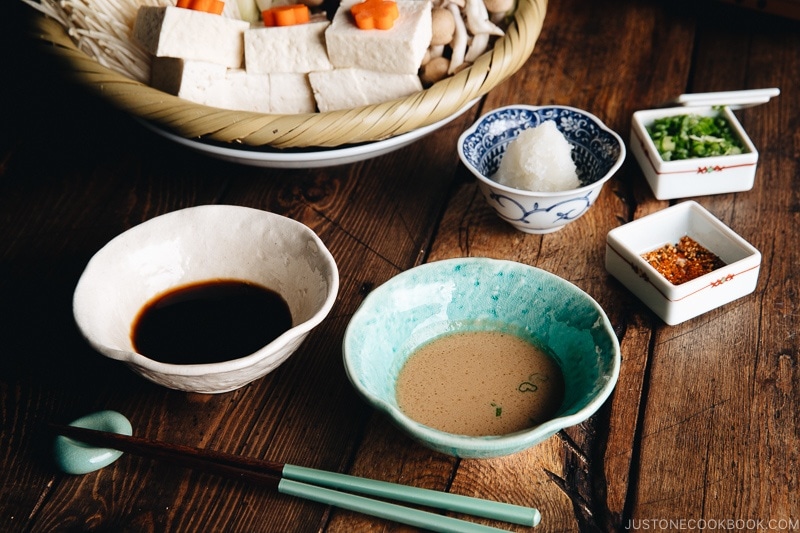
Once everyone is seated, you would start cooking with tough vegetables and tofu, followed by softer vegetables. Paper-thin slices of meat take only a few seconds to cook. When you want to eat meat, you would pick up a slice with the communal chopsticks, and stir in the broth for a few seconds, and transfer to your own bowl of a dipping sauce.
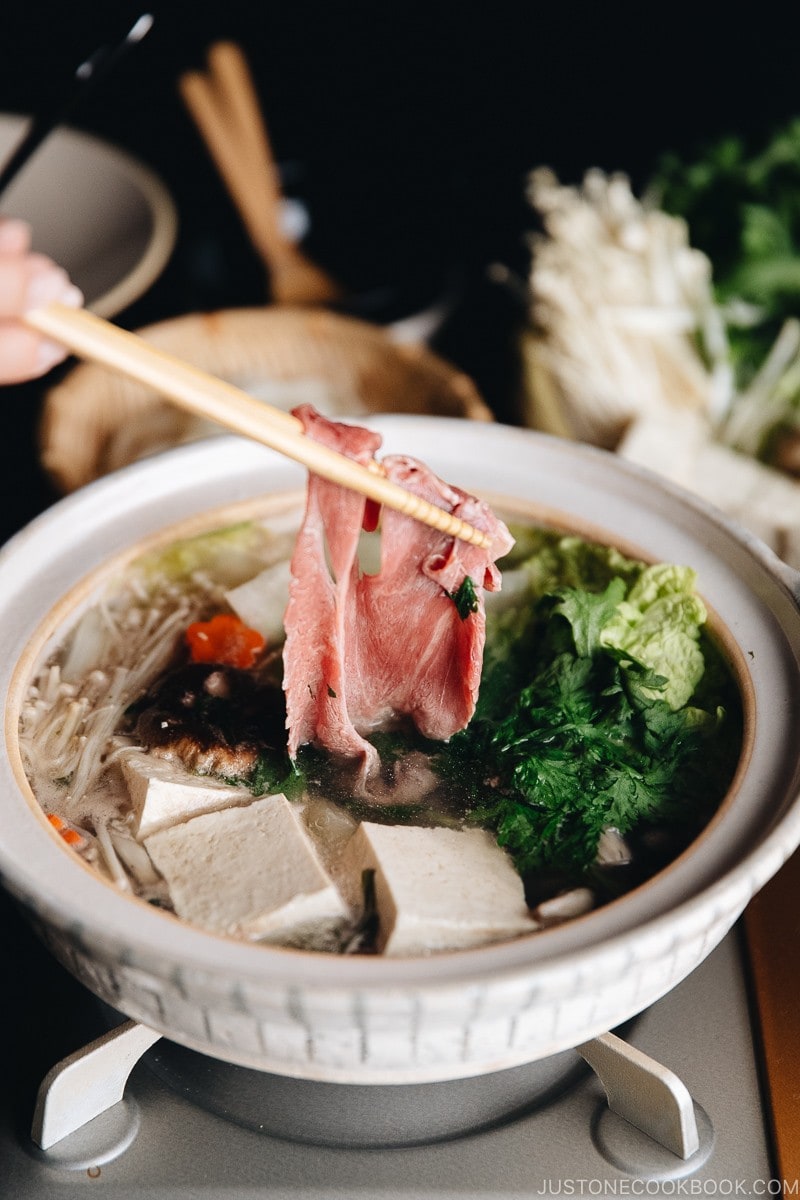
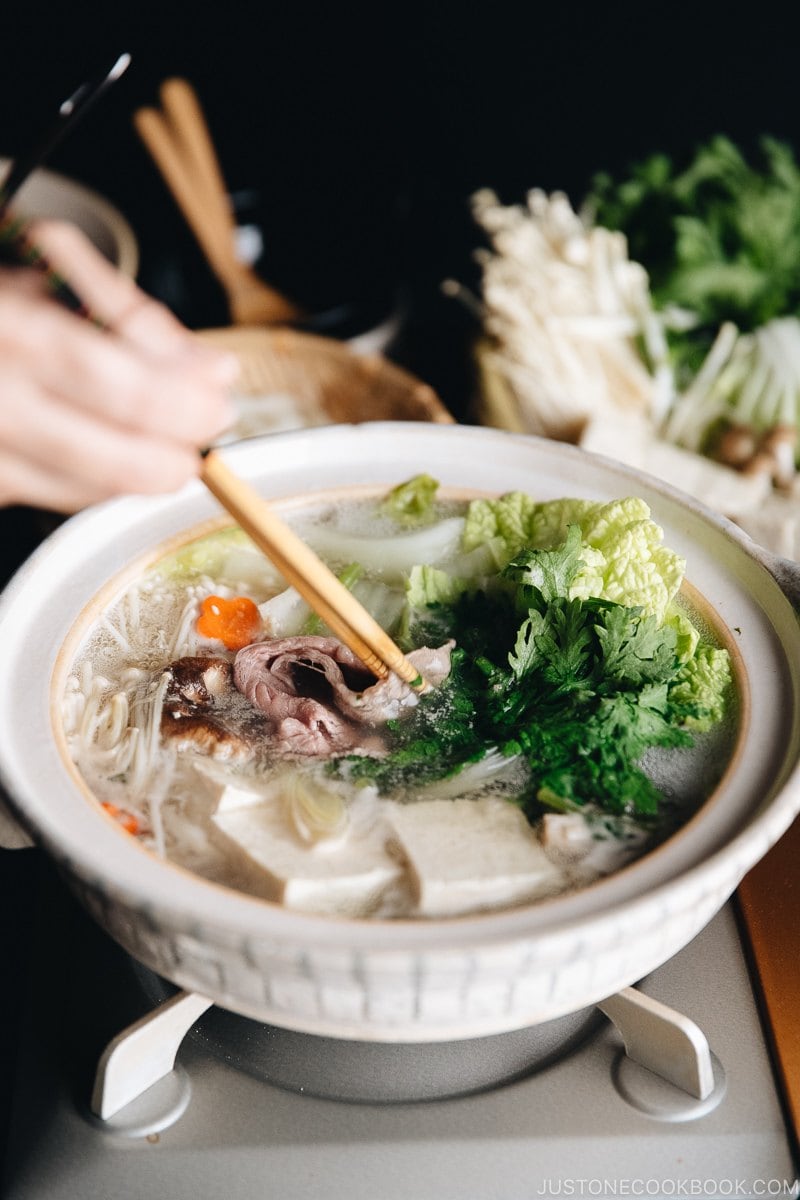
You can dip cooked vegetables, tofu, and meat in either your sesame or ponzu sauce. I personally love meat in sesame sauce and vegetables and tofu in ponzu sauce.
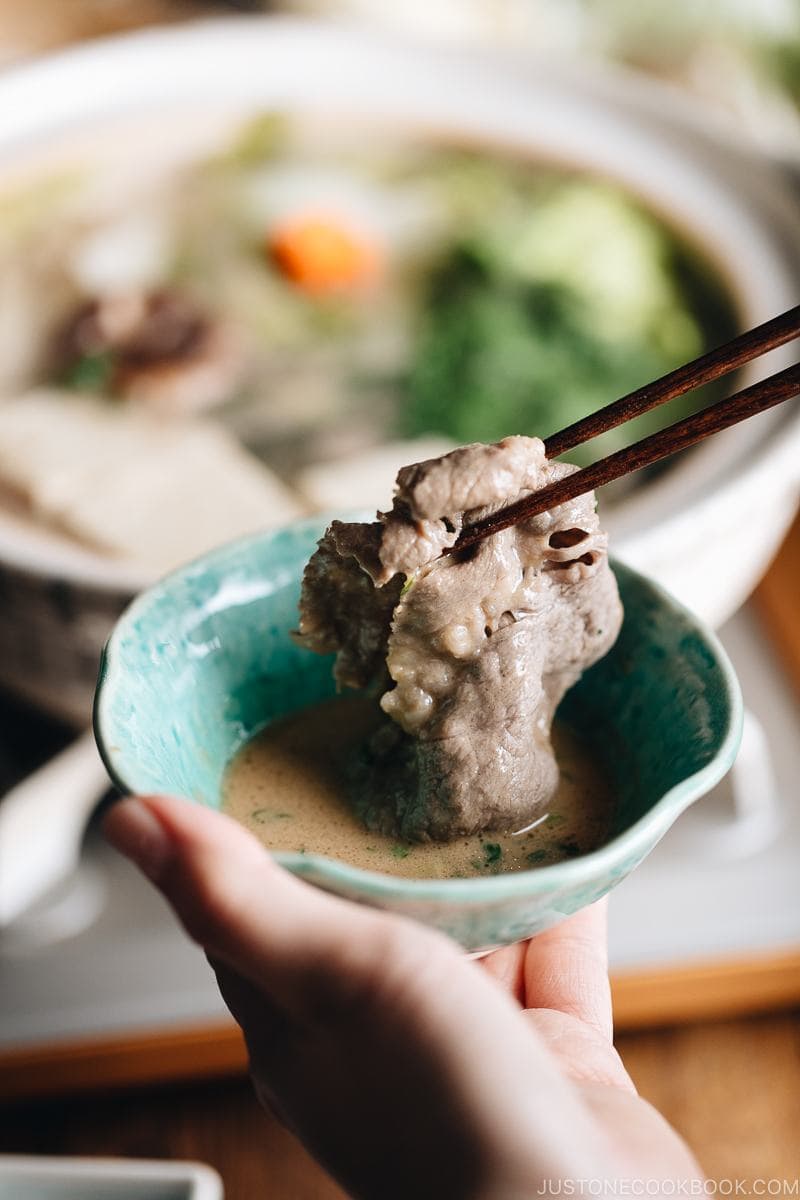
You continue to cook while you eat. There is a set of communal chopsticks to cook ingredients and serve. While cooking, make sure to skim scum and foam on the surface so you can have a more refined taste.
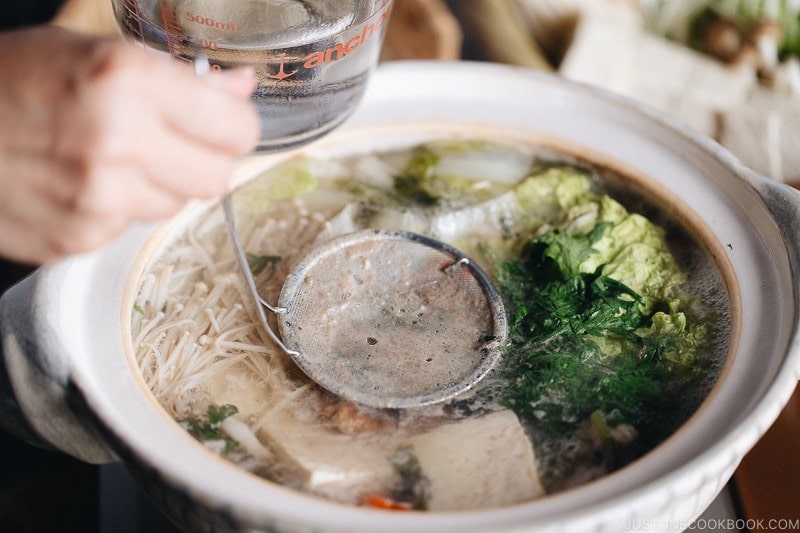
Once all the ingredients are cooked and taken away from the hot pot, you cook udon noodles in the remaining broth and enjoy.
If you dine at a shabu shabu restaurant, the restaurant staff will get you started by cooking a few ingredients first. Don't hesitate to ask if you are unsure how to go about it. If you're at home cooking up the hot pot, I hope this post will guide you through everything you need to know to enjoy your first Shabu Shabu experience.
The Key Shabu Shabu Ingredients and Substitutes
1. Kombu dashi
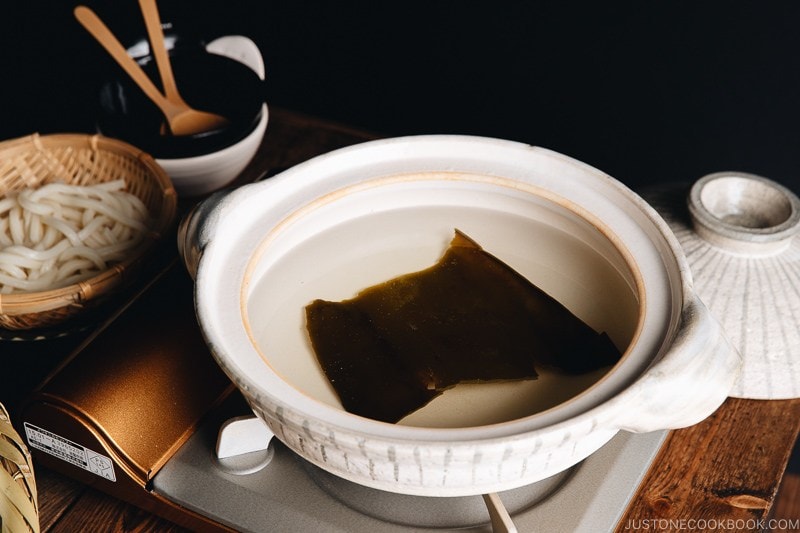
There are many different types of dashi (broth) but for shabu shabu we use dashi made from kombu (kelp). It is vegetarian and really easy to make. You can just drop a piece of kombu in a pot of water and let the flavor comes through. That's it!!
2.Vegetables +Mushrooms
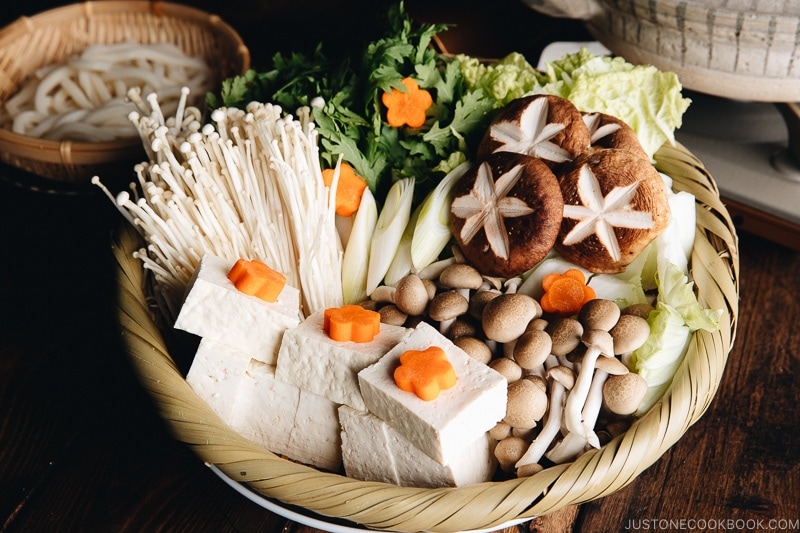
The most commonly used vegetables for shabu shabu are: napa cabbage, shungiku (chrysanthemum greens or tong ho), long green onion (negi), and carrot. You can add other vegetables, like cabbage, broccoli, zucchini, and so on. But it's worth making a trip to your nearest Asian grocery store for some harder-to-find ingredients like shungiku and long green onion. Chinese and Korean grocery stores usually carry vegetables. For napa cabbage, you may have luck finding them at major grocery stores like Walmart, Target, Whole Foods, etc.
Mushrooms that are often used in this recipe include shiitake mushrooms, enoki mushrooms, and shimeji mushrooms. You can use other types of mushrooms, such as button mushrooms, mostly to enjoy the different textures.
3. Thinly sliced meat: beef/pork
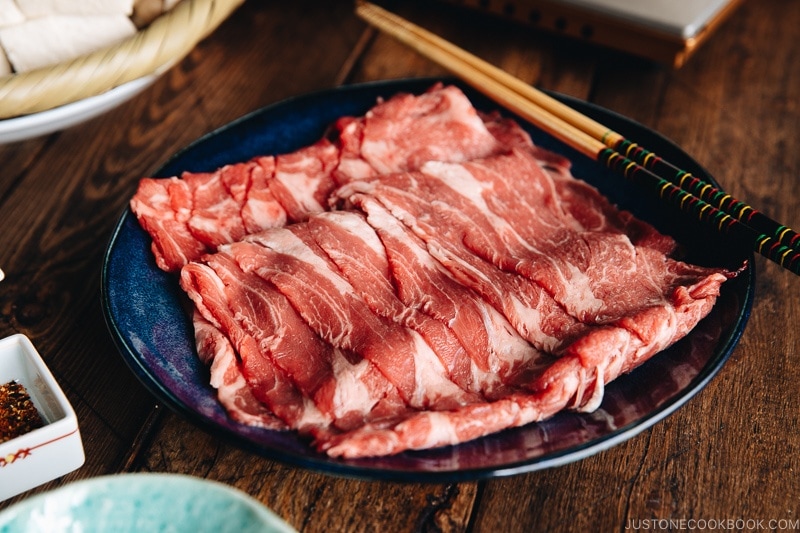
The most noticeable difference of having shabu shabu outside of Japan is the quality of meat. It can be difficult to source the same quality meat without paying a high price in the US. Supermarkets in Japan offer great quality beef at a regular price. But we make it work!
Unless there is a well-stocked Japanese grocery store near you, you probably won't be able to find thinly sliced meat in your local grocery store. So you have to thinly slice the meat yourself. It's very easy to do, and here's the tutorial.
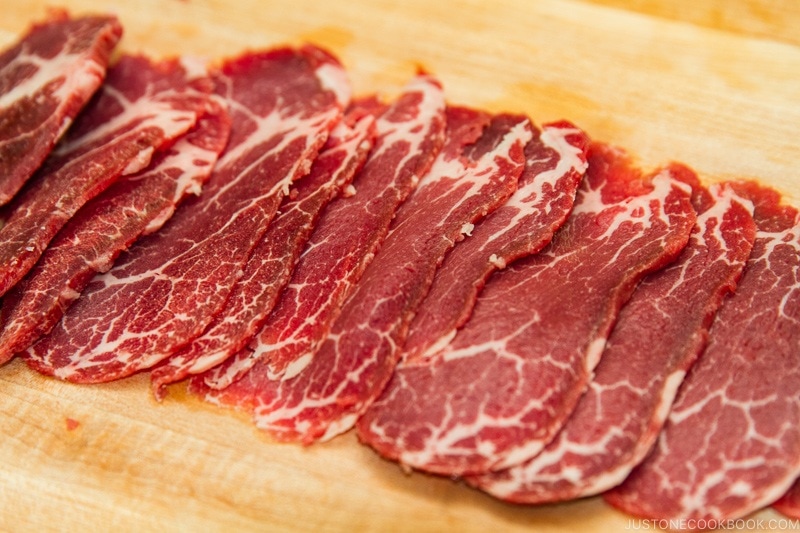
How to Thinly Slice Meat
Prepare Shabu Shabu in Donabe
Shabu Shabu is cooked in kombu dashi in a donabe (土鍋), an earthenware pot, on a portal stove. If you don't own one, you can use a Dutch oven or any large pot. Donabe and Dutch oven keep the contents warm for a long time, so it's perfect for hot pot. If you own a donabe, this is a great chance to use it. But before you start, you need to season it. Here's how you get it ready.
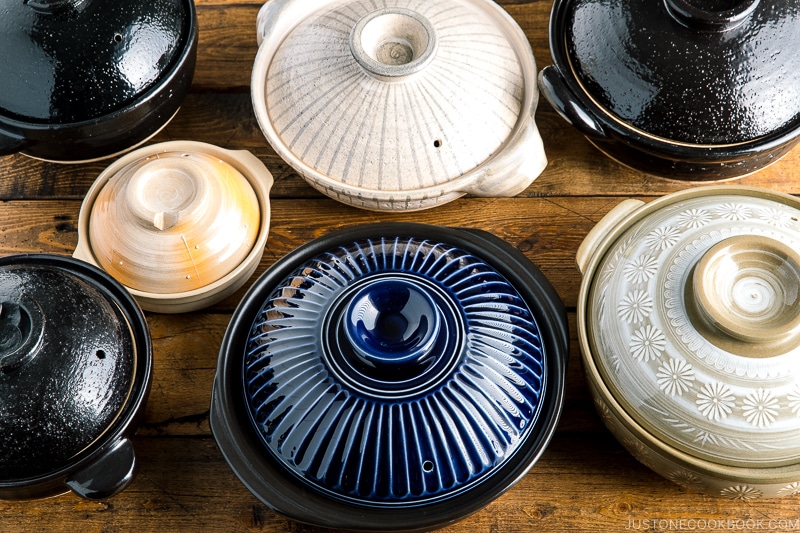
How To Season Donabe (Earthenware Pot)
Shabu Shabu – A Quick, Easy, and Healthy Meal All Year Around
As a busy mom, I not only make the hot pot during the holidays but all year round. I love that I don't have to do the cooking before dinner time. All I need to do is to prepare the ingredients and some simple chopping and let everyone cook dinner together at the table.
Since all the ingredients are cooked in broth, there is no oil used in the hot pot. It's a very low-fat meal, and a great way to eat a lot of vegetables. Happy swishing and enjoy shabu shabu all year around!
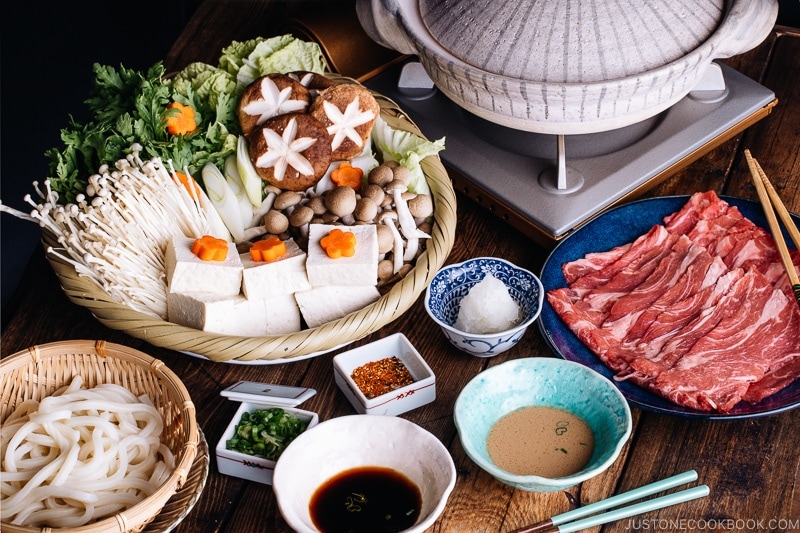
If you are interested in learning about Japanese Hot Pot, check out Nabemono: A Guide to Japanese Hot Pot.
Sign up for the free Just One Cookbook newsletter delivered to your inbox! And stay in touch with me onFacebook ,Pinterest , YouTube , andInstagram for all the latest updates.
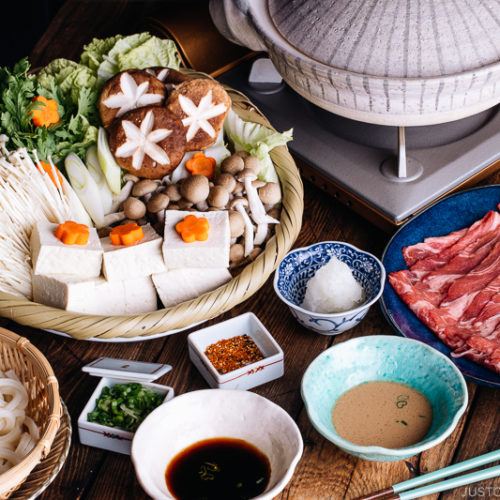
Shabu Shabu
Shabu Shabu is a popular Japanese-style hot pot where the meat and assorted vegetables are cooked in a flavorful broth called kombu dashi. Everyone at the table takes part in the communal cooking and enjoys the ingredients with different dipping sauces. It's intimate yet casual, and a whole lot of fun!
Servings: 4
Prevent your screen from going dark
- 1 kombu (dried kelp) (10 g; 3 inches x 3 inches, 7.5 x 7.5 cm)
- 1 serving udon noodles (3 oz/90 g dry udon noodles; 8.8 oz/250 g frozen/boiled udon noodles)
- 8 leaves napa cabbage (12 oz, 340 g)
- ½ bunch shungiku (tong ho/garland chrysanthemum) (4 oz, 113 g)
- 1 Tokyo negi (naga negi; long green onion) (4 oz, 113 g; or use the white part of a leek or 2 green onions)
- 1 package enoki mushrooms (7 oz, 200 g)
- 1 package shimeji mushrooms (3.5 oz, 100 g)
- 4 shiitake mushrooms (2.3 oz, 65 g)
- 2 inches carrot (2.3 oz, 65 g)
- 1 package medium-firm tofu (momen dofu) (14 oz, 396 g)
- 1 lb thinly sliced beef (chuck or rib eye) (4-5 oz/113-140 g per person)
Japanese Ingredient Substitution: If you want substitutes for Japanese condiments and ingredients, click here.
-
Gather all the ingredients.
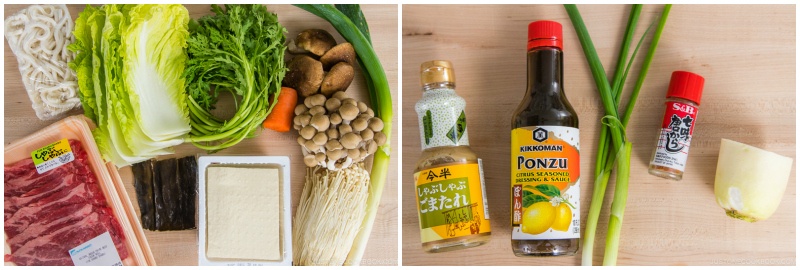
To Make the Homemade Ponzu and Sesame Sauces
-
To make the ponzu and sesame dipping sauces from scratch, follow the recipe links in the ingredient list. You can make the sauces ahead of time.

To Prepare the Broth
-
Fill a donabe clay pot (or Dutch oven or any large pot) two-thirds full of water. Add the kombu and soak in the water for at least 30 minutes. Meanwhile, you can prepare the other ingredients. The right image shows the kombu dashi broth after 30 minutes.
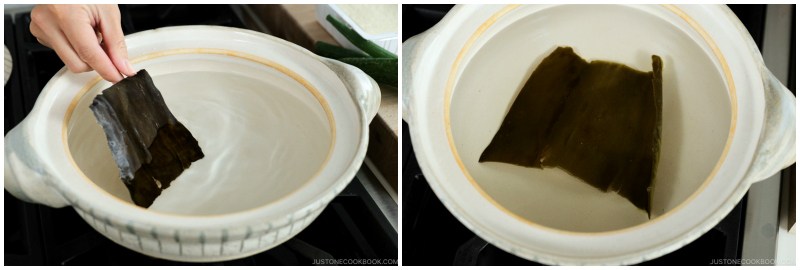
To Prepare the Ingredients
-
Prepare the udon noodles according to the instructions. Reheat the frozen udon in boiling water for 1 minute. Transfer the noodles to iced water to stop the cooking and drain well. Place on a plate and set aside. You'll end the meal with the udon course after all the other ingredients are cooked and eaten.

-
Cut the napa cabbage leaves into 2-inch (5 cm) pieces, and then cut each piece in half or into thirds.
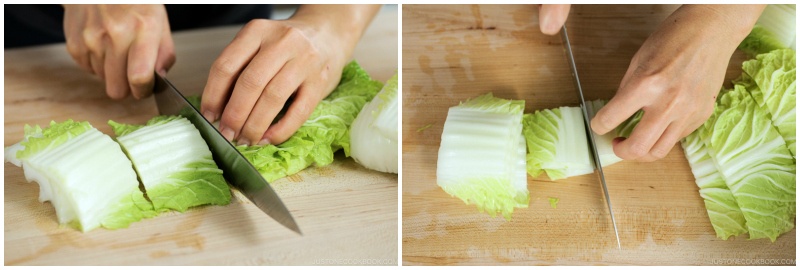
-
Cut the shungiku into 2-inch (5 cm) pieces.
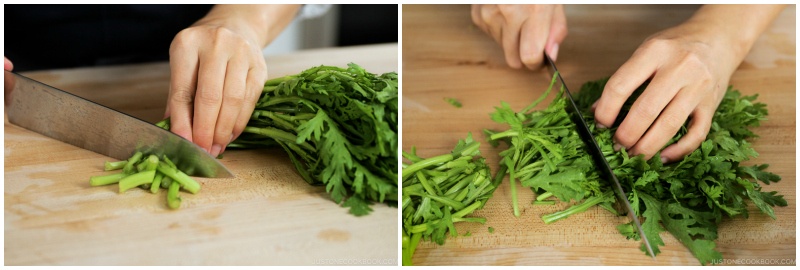
-
We only use the white part of the Tokyo negi (or the leek or green onions). Cut it diagonally into pieces ½ inch (1.3 cm) thick.
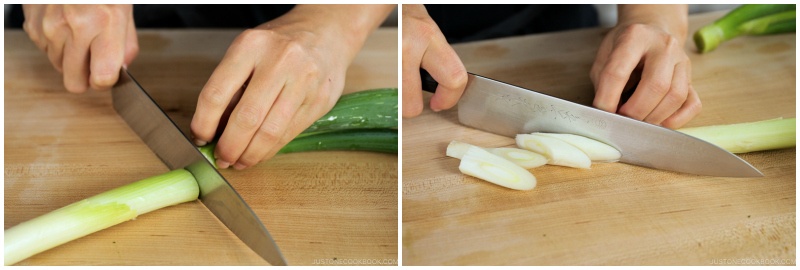
-
Rinse the enoki and shimeji mushrooms. Discard the root ends of both mushrooms and separate them into smaller chunks.

-
Cut off the stems of the shiitake mushrooms and make a decorative cutting on the cap (optional).

-
Cut the carrot into ¼-inch rounds. If you'd like, you can use a vegetable cutter to create a flower shape.

-
Cut the tofu into square pieces about 1 inch (2.5 cm) thick.
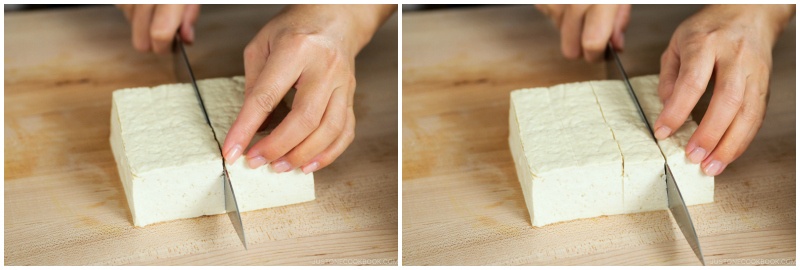
-
Arrange all the ingredients on a serving platter.
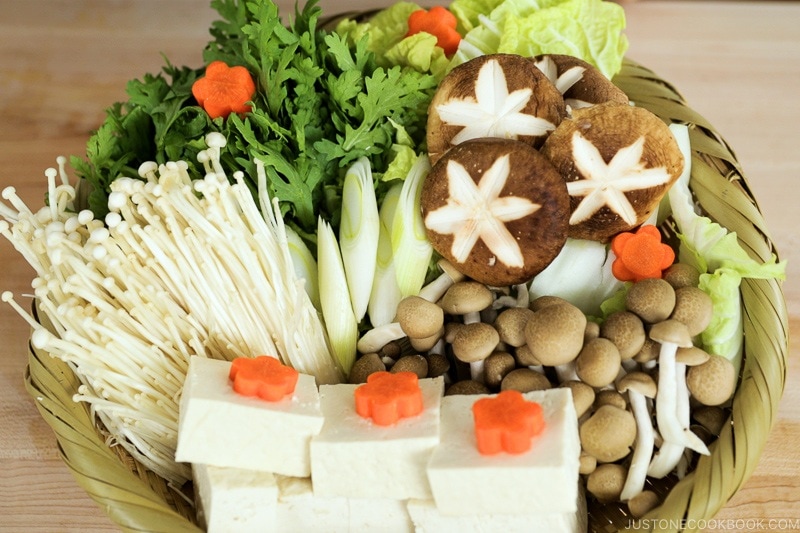
-
Peel the daikon and grate it using a grater (I love and use this one all the time). Squeeze the grated daikon gently to remove most of the liquid and put it into a small bowl.
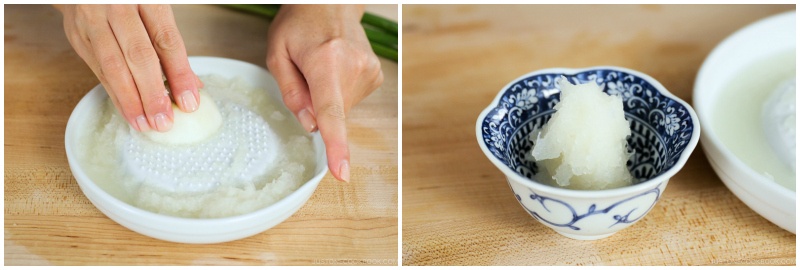
-
Cut the green onions into thin rounds and put it in a bowl.
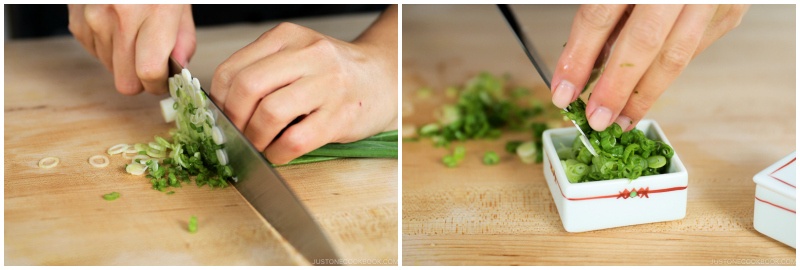
-
Prepare the shichimi togarashi in a bowl (optional). Lay the thinly sliced beef on a plate.
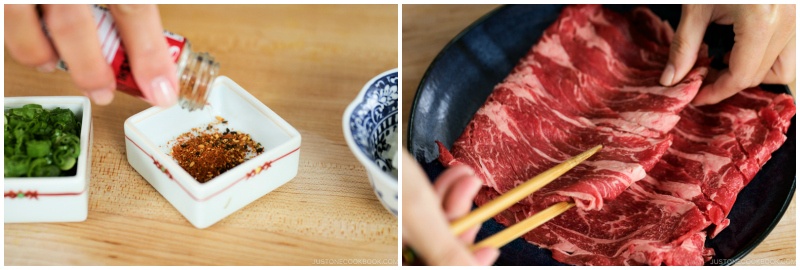
To Cook the Shabu Shabu
-
Set up a portable gas stove at the table and put the donabe on the burner. Place the platters with the ingredients on the table. Give each person their own bowls of ponzu sauce and sesame sauce. I also like to prepare an additional bowl for each person so they can use it to cool the food.
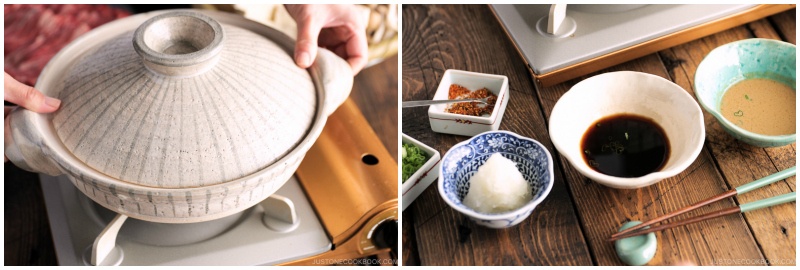
-
Bring the broth to a simmer over medium heat. Take out the kombu right before water starts to boil (otherwise, the water will get slimy).
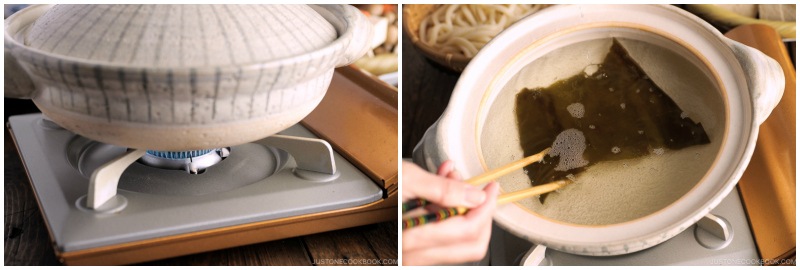
-
Add the tofu, tough parts of napa cabbage and shungiku, negi, carrots, and some mushrooms. You don't have to put all the ingredients in at once; you may cook in batches if you prefer. Cover to cook for 10 minutes.
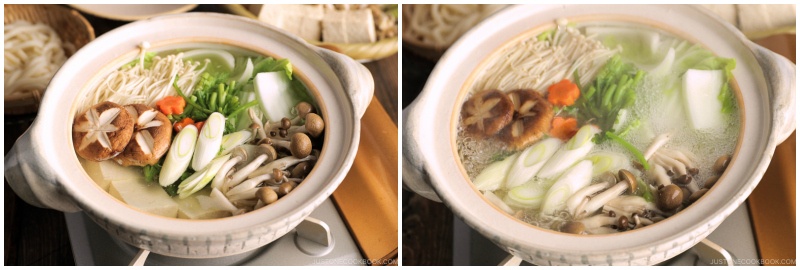
To Eat the Shabu Shabu
-
While you're waiting for the food to cook, prepare your dipping sauces. Add the grated daikon, shichimi togarashi, and green onion to the ponzu. Add the green onion to the sesame sauce.

-
When you're ready to eat the meat, pick up a piece of thinly sliced beef with a set of communal chopsticks and stir or "swish" the meat in the boiling broth. Cook for 20-30 seconds or until the meat is no longer pink; be careful not to overcook it.
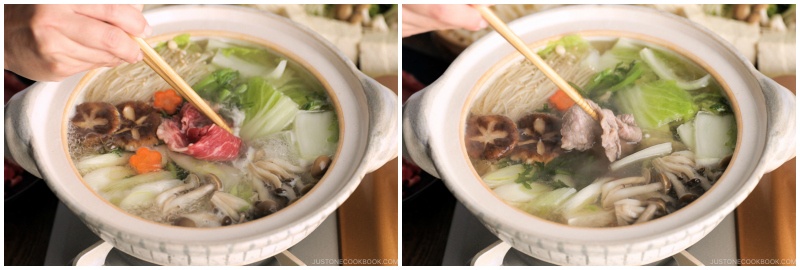
-
Take out the cooked beef and vegetables from the pot when they are done and dip the food in the ponzu or sesame sauce.
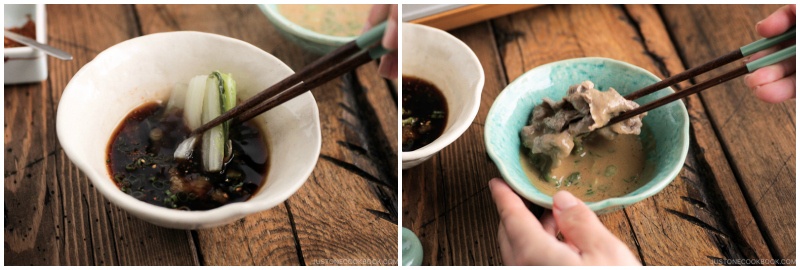
-
Add the remaining ingredients to the boiling broth as needed and simmer for a few minutes. Skim off the scum and foam from the surface as you cook. Prepare a fine-mesh skimmer and a 2-cup measuring cup or bowl filled with water at the table so you can easily skim as you cook. The water in the measuring cup will help you clean the skimmer. We want to keep the broth as clean as possible.

-
When all the ingredients are cooked, skim the broth one last time to prepare for the udon noodles. Typically, a hot pot meal ends with cooking udon noodles or porridge.
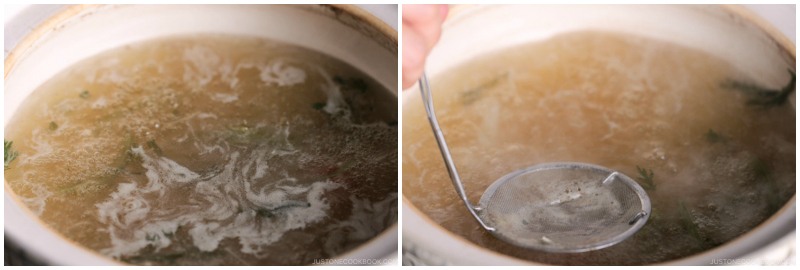
-
Add the udon noodles to the pot and reheat for 1-2 minutes. Lightly season the broth with salt and white pepper, if you'd like (optional).
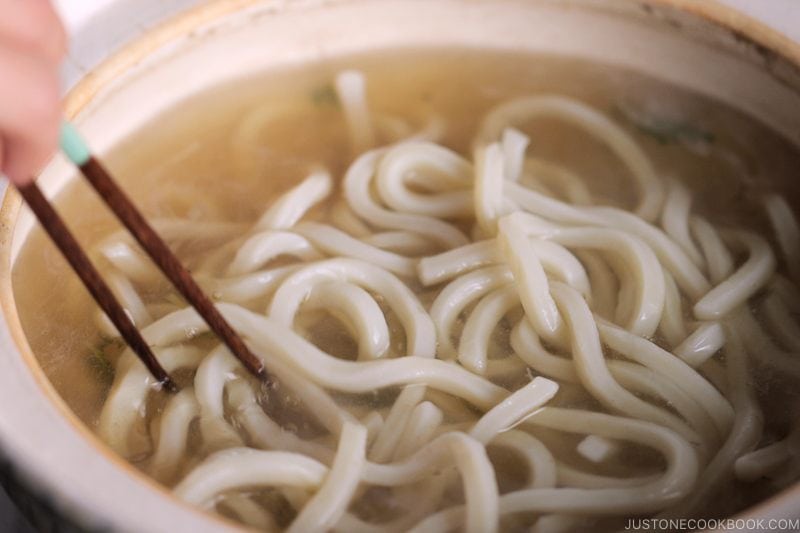
-
Dilute the individual bowls of ponzu sauce with the broth and serve the udon noodles in each bowl.
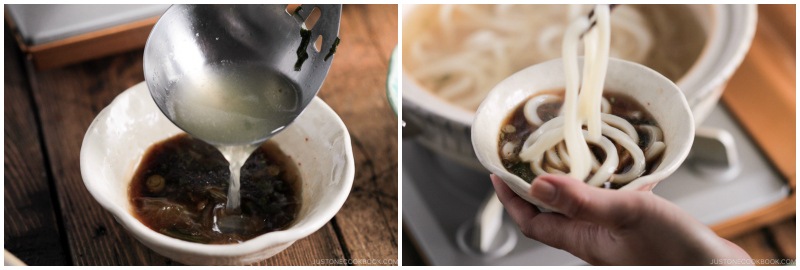
To Store
-
You can keep the leftovers in an airtight container and store in the refrigerator for 3 days or in the freezer for a month.
Calories: 477 kcal · Carbohydrates: 35 g · Protein: 38 g · Fat: 21 g · Saturated Fat: 8 g · Polyunsaturated Fat: 1 g · Cholesterol: 69 mg · Sodium: 178 mg · Potassium: 1036 mg · Fiber: 8 g · Sugar: 5 g · Vitamin A: 3133 IU · Vitamin C: 31 mg · Calcium: 238 mg · Iron: 5 mg
Course: Main Course
Cuisine: Japanese
Keyword: hot pot, shabu shabu
©JustOneCookbook.com Content and photographs are copyright protected. Sharing of this recipe is both encouraged and appreciated. Copying and/or pasting full recipes to any website or social media is strictly prohibited. Please view my photo use policy here.
If you made this recipe, snap a pic and hashtag it #justonecookbook! We love to see your creations on Instagram @justonecookbook!
Editor's Note: This post was originally published on December 2, 2011. The post has been updated with a video and new images in December 2018.
Source: https://www.justonecookbook.com/shabu-shabu/
0 Response to "Japanese Style Raw Egg Dipping Sauce Shabu Shabu Beef"
Post a Comment